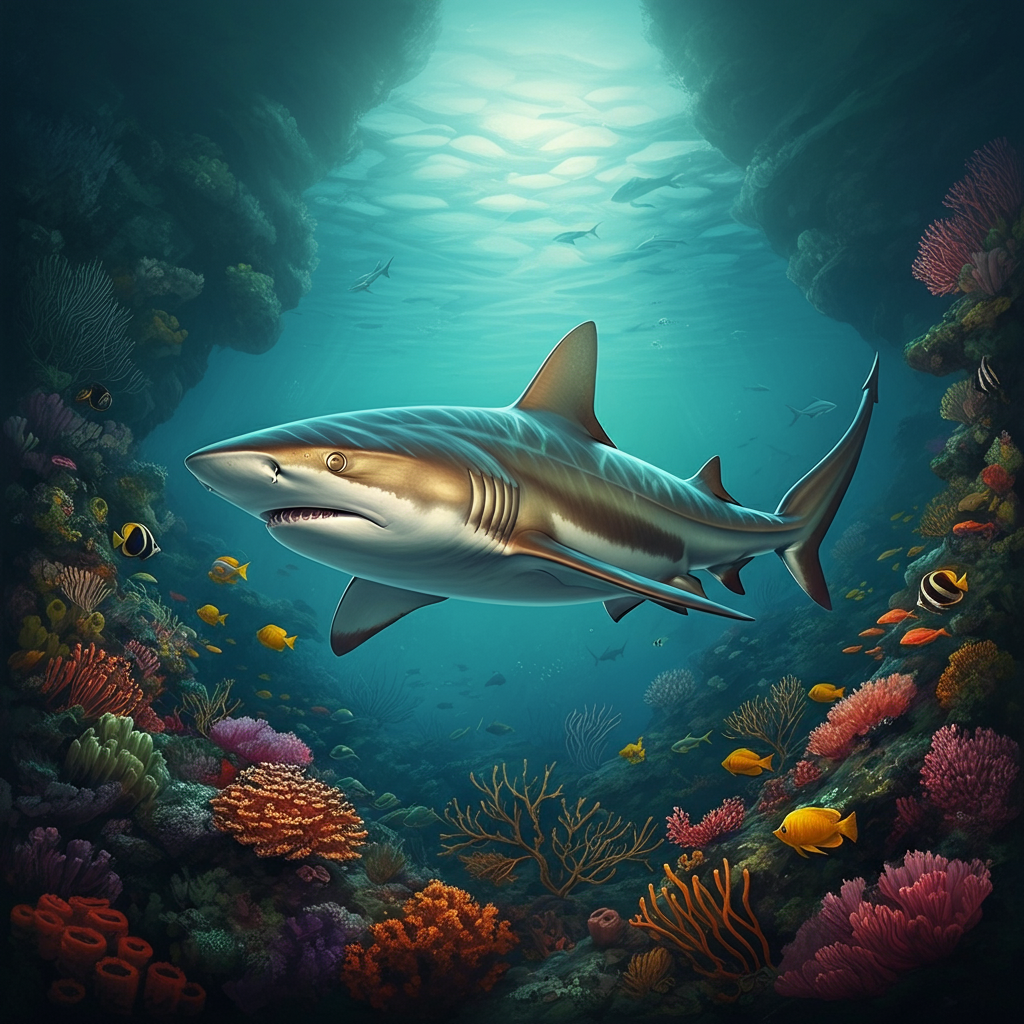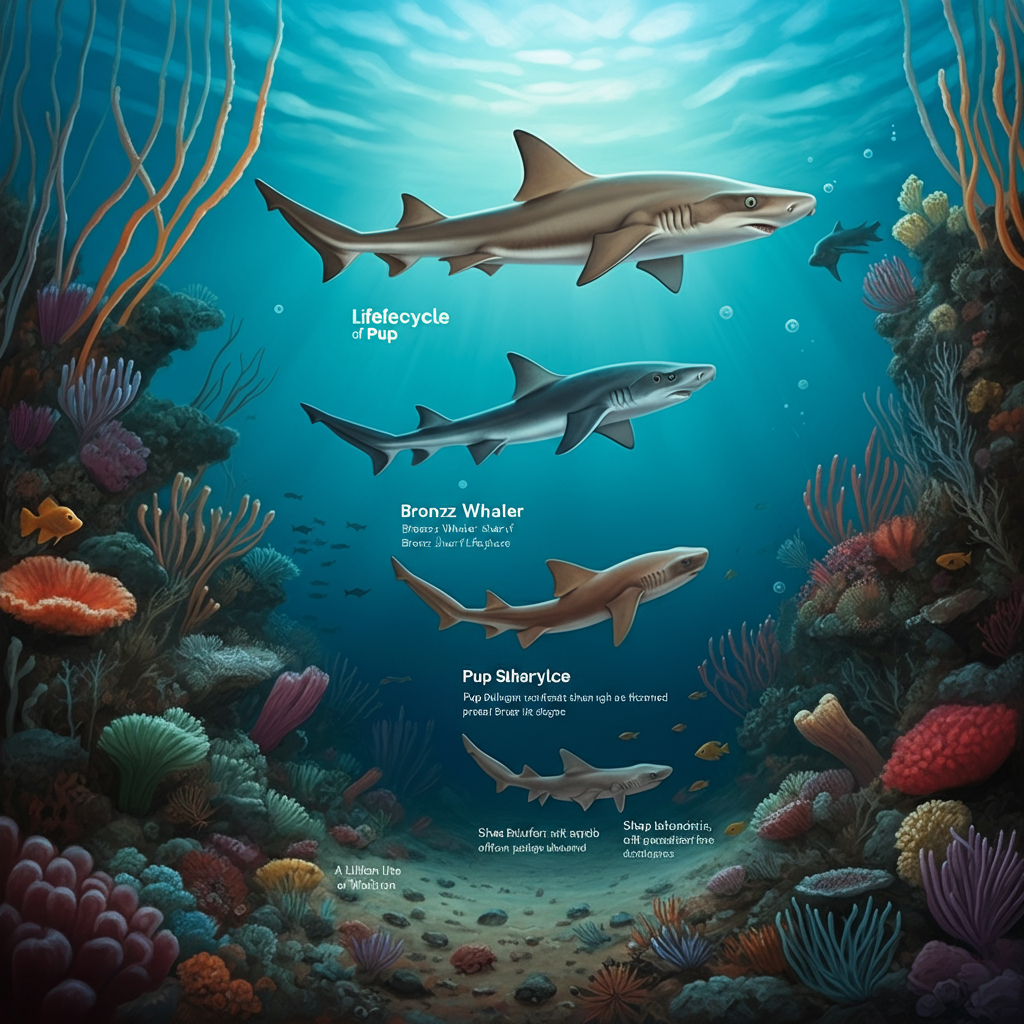The Copper Shark or Bronze Whaler Shark is an interesting sea predator that needs respect and admiration for being strong, swift, and resilient in oceanic environments. With its stunning bronze hue and torpedo-shaped body, the shark is a guardian of maintaining oceanic environments in balance. However, even though they are an invaluable component of their environment, they lag behind their much-discussed shark counterpart.
This piece puts us into the depths of Bronze Whaler Shark life, from body characteristics to habitat, diet, breeding patterns, conservation status, and beyond. Whether you’re a fan of ocean life, a diver who dreams of meeting the sea’s inhabitants, or simply curious about sharks, get ready to learn all you’re curious about these amazing animals.
Physical Characteristics and Identification
Among the most striking features of the Bronze Whaler Shark is its metallic bronze color, hence “Bronze” in its name. It also has a smooth texture to it that is usually characterized by darker shades on its edges on fins, hence having a silky and glossy texture that allows it to glidily nestle into the ocean’s depths.
Primary Physical Features:
Size: Bronze Whaler Sharks are usually 8 to 11 feet long and weigh a maximum of 675 pounds.
Body Shape: They possess a pointed torpedo-shaped body that allows them to easily move in the water.
Snout and Teeth: They possess a pointed snout and set of triangular teeth with serrated edges that allow them to become successful predators.
Eyes: Their large circular eyes are covered with protective membranes, which guard their vision during hunting or swimming in dark water.
Habitat and Distribution
Bronze Whaler Sharks are highly tolerant and thrive in temperate and subtropical seas around the globe. They primarily live in the coastal region, preferring bays, estuaries, and continental shelves.
Where Can You Find Them?
Habitat: They are found primarily along the coastlines of south Australia, New Zealand, South Africa, the coastal areas of South America, and the Mediterranean Sea.
Depth Range: They are found in shallow waters to a depth of 100 meters (around 330 feet).
Bronze Whaler Sharks are migratory animals and migrate between areas based on seasonal fish migration, warm water, and breeding areas.
Diet and Feeding Behavior
Bronze Whaler Shark is an apex predator with more advanced skills to capture a variety of prey. They primarily feed on fish but in the local area have their diet supplemented.
Summary of Diet:
Primary Prey: The primary diet consists of main pelagic fish such as sardines, mackerel, and herring.
Secondary Prey: Second to those are squid, octopus, and other cephalopods.
Feeding Habits: They are opportunistic feeders who employ their agility and speed in hunting prey or ambushing schools of fish.
Upon large fish migrations, such as sardine runs, Bronze Whalers show up in massive aggregations to participate in feeding frenzies with other marine predators.
Reproduction and Life Cycle
Bronze Whaler Sharks have fascinating reproductive habits that reveal the intricacies of shark breeding systems.
Key Facts
Mating: Like other sharks, they are fertilized internally. Mating involves injecting sperm into the female using claspers by the male.
Viviparous Birth: They are viviparous and give live births. Litter size ranges between seven to 24 pups.
Gestation Period: Gestation is about 12 months long.
Juvenile Development: Newborns or neonates are approximately 2 feet in length when born and are already independent, using shallow waters as nurseries to protect them from larger predators.
Low reproductive rate and prolonged maturation stage make this species highly vulnerable to population pressures, such as overfishing.
Conservation Status and Threats
The Bronze Whaler Shark is currently listed as Near Threatened on the IUCN Red List due to mounting human and environmental pressures.
Major Threats:
Overfishing: Sharks are targeted for their meat, fins (shark fin soup), and liver oil, cutting their numbers.
Bycatch: Being a large predator fish, they are likely to become incidental bycatch in commercial fisheries.
Habitat Degradation: Coastal areas destroyed and polluted by human development are the primary threats to their habitat.
Slow Reproduction: Due to their slow breeding rate, populations cannot recover quickly from severe drops.
Conservation measures like catch quotas, marine reserves, and consumer awareness programs are essential to maintain their lives for generations to come.
Interesting Bronze Whaler Shark Facts
Bronze Whaler Sharks are interesting in numerous ways. Some of the following interesting facts about them include:
Team Hunters: They hunt in teams, particularly during bait-ball occurrences like sardine runs.
Lifespan: They are 30 years old in the wild if left undisturbed.
Good Sense of Smell: Like all other sharks, their phenomenal sense of smell allows them to detect the smell of blood at incredible distances.
Scuba Diver Encounters: They are inquisitive towards divers but do not attack unless provoked.
Winter Migrants: They migrate close to tropical waters when it is cold to maintain their optimal temperature range.
Why Bronze Whaler Sharks Need To Be Protected
Bronze Whaler Sharks are important in ensuring balanced healthy ocean ecosystems. Through population control of fish and vulnerable prey removal, they indirectly enable other species of fish to survive. With this interesting shark, its identification is increased and its conservation need is highlighted.


